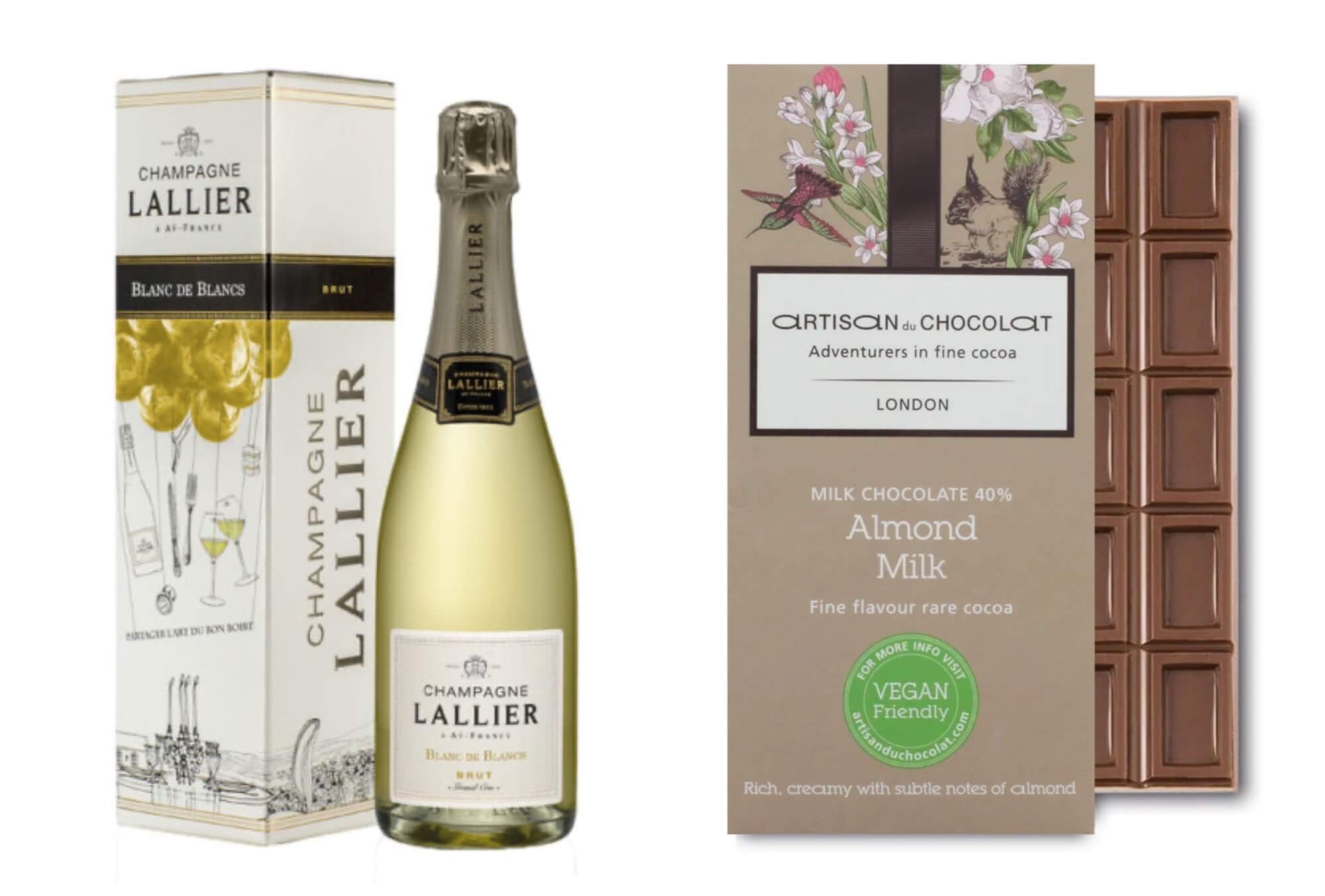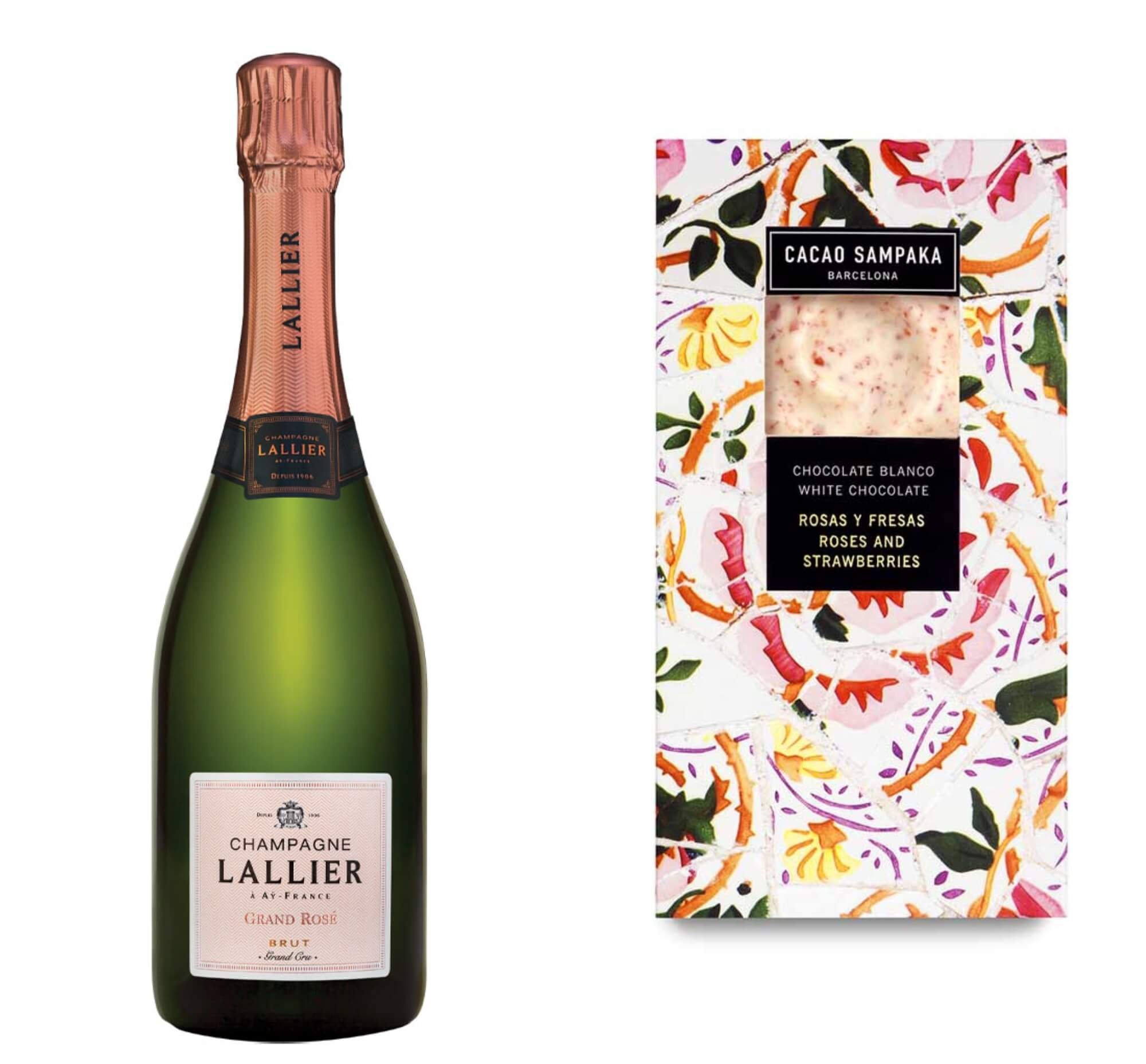5 Tips for Making Magical Chocolate and Sparkling Wine Pairings
Editor’s note: We first looked at red wine and chocolate, in our exploration of wine styles and chocolate. Next up is sparkling wine, and stay tuned for white wine and chocolate.
Sparkling wine is not only fun to drink, but it can also be a great choice for pairing with chocolate. The crisp, refreshing flavors and lively texture of the bubbles compliment a wide range of chocolate styles. Whether French Champagne, Italian prosecco, or Spanish cava, there are many suitable options to enjoy with your next morsel of chocolate.
Sadly, it’s not as easy as simply picking any random chocolate and sparkling wine to enjoy together. To create excellent pairings, you need to keep a few things in mind to avoid any pitfalls. Not to worry, however. We have some tips and suggestions to help you make the most of your chocolate and sparkling wine pairing.
Consider the style. Not all bubbles are the same!
For many casual wine lovers, any glass of bubbles is simply known as “prosecco” or “champagne”. When standing at the bar, the names are practically interchangeable. Look a little closer, and the differences are actually quite significant. When it comes to pairing sparkling wines with chocolate, the devil is in the bubbly details.
The most well-known sparkling wine, Champagne, is made using a technique known as méthode traditionelle, the ‘traditional method’. Essentially, the grape juice is fermented and blended into a non-bubbly wine first. Once completed, that wine is put into bottles with a little more yeast and grape juice and capped. A smaller second fermentation occurs, but this time, the carbonation created has no way to escape, and so it’s absorbed into the wine and…voilà! Bubbles are created. Spanish cava is also made this way, although from different grapes, so different flavors emerge.
Prosecco undergoes a different process called the Charmat method. This process follows a similar sequence as Champagne but omits a couple of steps that give Champagne its trademark refined flavor and age-ability. Furthermore, the entire Charmat method takes place in pressurized tanks, which increases the volume of wine that can be made at once, and drops the cost of making it.
Yet other methods for making sparkling wine are used, although in smaller amounts. The Pétilant Naturel method, casually called “pet nat”, uses extremely cold temperatures and filtering techniques to halt fermentation for a couple of months before finishing the process. The continuous method, also called the Russian method, might be the oddest of all, involving the continual addition of yeasts to the juice in a sealed vat, slowly increasing the pressure until it reaches the desired level. When deciding what wine to pair with chocolate, think about which style of bubbles might fit best. Each wine will have its own flavors and textures, and they’re all great. Don’t fret if you don’t have a specific style in mind. Generally, they will all be delicious. Knowing which wine is being poured, however, offers an opportunity to strengthen the match.
Consider the complementary flavors
Champagne’s typically toasty and almondy flavors would complement chocolate that contain those same characteristics. For example, try Lallier’s Blanc de Blanc Champagne a NY International Wine Competition Double Gold winner in 2022, with Artisan du Chocolat’s milk chocolate bar made with almond milk. The subtle almond flavor in the chocolate will accent the same notes in the wine, resulting in a harmonious pairing.
If Prosecco is being poured, find a chocolate that will emphasize the flowery and fruity personality of the wine. Belgian chocolatier Dolfin makes a dark chocolate bar with pear and roasted almonds that would be perfect for Prosecco’s slightly sweeter and fruitier characteristics.
Consider the sweetness
Just as there are different methods of creating bubbles, sparkling wines are also made in a variety of sweetness levels. On the dry end of the spectrum, the most popular wines tend to be classified as “brut”. This refers to a particular level of sugar remaining in the wine when it’s bottled. Believe it or not, brut isn’t the driest wine out there - there are actually two levels of dryness beneath it! When people enjoy a glass of bubbles they consider as dry, most often it’s brut. On the sweeter side, sparkling wines can climb in sugar levels until they almost rival dessert wines. These wines are usually identified as “sec”, “demi-sec”, or the super-sweet “doux”.
It’s important to consider the sweetness of the wine being paired because it will have a direct effect on how the chocolate is perceived. Wines with more sweetness to them need a partner that won’t be muted or made almost unable to be tasted because of those sugary sips. Sweet, soft sparkling wines such as Moscato need a chocolate that can’t be pushed around. Tiny Umbrella’s Moscato is a great choice for a full-bodied white chocolate such as Åkesson’s Madagascar white chocolate bar. Moscato’s naturally sweet tropical fruit tones meld seamlessly with the chocolate’s mouth-coating texture and vanilla cream flavor.
Dry sparkling wines can be paired with chocolates that have some smoothness and texture to them, especially milk chocolate. The 2017 Champagne Telmont Reserve de La Terre a NY International Wine Competition 2022 Silver winner, s wonderfully balanced between fruit and backbone, making it an ideal partner for chocolate that matches its suaveness. Try it with Fruition Chocolate’s incredible 43% cacao Milk Chocolate with Brown Butter. The toasty, caramelly notes are irresistible with the wine’s personality.
Bubbly Rosé is an almost universal pairing wine
Don’t overlook sparkling rosé wine! Pink bubbles are not only fun to drink, they are also amazing at pairing with chocolate. They share other sparkling wine’s refreshing, palate-cleansing texture. In addition, sparkling rosé wines add another layer of fruit, often red berry, to the profile. Those red fruit tones can vary from sweet strawberry to more serious blackberry tones. When these flavors are combined with the variety of sweetness levels available in sparkling wine, a huge range of pairing possibilities emerge.
Rosé Prosecco is slightly sweet and full of enticing aromas like honeysuckle, red cherries, and even hints of melon. Pair it with a chocolate that brings those characteristics to the forefront. Amedei’s Toscano Rosso is a 70% cacao dark chocolate bar loaded with strawberry, raspberry, and cherry. A nibble of this will make the cherry flavors in the wine explode while countering the wine’s tough of sweetness just enough to make the combination sing.
Cacao Sampaka’s white chocolate with rose and strawberry and Love Cocoa’s Strawberry Champagne bar are both stellar choices for sparkling rosé wines, especially Champagne such as Lallier Grand Rosé, a NY International Wine Competition 2022 Silver medalist . The wine’s focused red fruit flavors and precise bubbles unite with the flavors and opulent textures of these gloriously hedonistic chocolate bars.
Don’t worry about making mistakes
Above all, don’t worry about making mistakes. It’s hard to go completely off the rails here. Of course, try to avoid chocolates that have intensely assertive flavors - no chili pepper chocolates, please! Otherwise, if you keep the sweetness and style of the wine in mind, you’ll hit way more often than you’ll miss. In the end, we’re pairing delicious sparkling wine with tasty chocolates, and that’s hard to beat.



